Gemeinsam mit der Metropolregion Bologna und der Universität Hamburg untersuchen wir im Rahmen des Projekts Crowd-Fund-Port die Bedingungen für Civic Crowdfunding.
Erstellen Sie Ihre eigene Umfrage zu Nutzerfeedback.
Photo by Marco Nürnberger 
Tech Education, Tech Regulation, Tech Communication, Tech Innovation

Gemeinsam mit der Metropolregion Bologna und der Universität Hamburg untersuchen wir im Rahmen des Projekts Crowd-Fund-Port die Bedingungen für Civic Crowdfunding.
Erstellen Sie Ihre eigene Umfrage zu Nutzerfeedback.
Photo by Marco Nürnberger 

The following list is part of our research on Civic Crowdfunding. Feel free to add any new projects in the comments.
My definition of Civic Crowdfunding is as follows:
Civic Crowdfunding is the subset of Crowdfunding campaigns which aim to finance a civic cause. A civic cause is a cause which improves public infrastructure – this can be means of public transport, public institutions, public events. The dominant feature of a public infrastructure is that it is impossible to exclude anyone from using it. In this case Civic Crowdfunding is generating benefits where it is impossible to exclude a non-supporter from benefitting from the cause.
Our network partner Alexandra Partale (from Place2Help) defines Civic Crowdfunding with a strong component of regional identity:
Civic Crowdfunding describes the financing of Projects with local and regional impact through the Crowd. The project owners can be public institutions.
The list is quite wide – it has the following categories:
LeihDeinerStadtGeld is a German lending-based Crowdfunding platform. Citizens can lend their city money at reduced interest rates for civic projects. One case was the renovation of the local firefighter house of the village Oestrich-Winkel. 83,200 Euro in loans were given by the citizens.
Place2Help was a German Crowdfunding Platform for Civic Crowdfunding. It was supported by the Sparda Bank Munich, a local cooperative bank. It featured civic projects from the region of Munich. The network has reinvented itself recently as Place2Help Rhein-Main, where it helps Crowdfunding projects in the region to find partners.
En Crowd – Platform operated by AVU Aktiengesellschaft für Versorgungs-Unternehmen (a local energy and water provider in the Germen Ennepe-Ruhr-Kreis). The platform is a donation-based Crowdfunding platform.
Mikrocrowd – Platform to support entrepreneurs, operated by the Baden Württemberg Landesbank (L-Bank). Combines a loan of 10.000 Euros with a successful Crowdfunding campaign. The campaigns have to be launched at Startnext-page.
Wir-bewegen.sh is a Donation-based Platform run by the Investitionsbank Schleswig-Holstein, a publicly owned bank in the North of Germany. The platform allows the support of Civic projects, however it is also being used as part of the CSR-activities of the bank by matchfunding some of the projects.
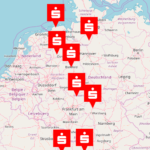 The network of local saving bankings (Sparkassen) operate a network of donation-based Crowdfunding-platforms under the label „Einfach.Gut.Machen„. The software is provided by Whitelabel-Provider TableOfVisions.
The network of local saving bankings (Sparkassen) operate a network of donation-based Crowdfunding-platforms under the label „Einfach.Gut.Machen„. The software is provided by Whitelabel-Provider TableOfVisions.
Some Sparkassen-Banks also cooperate with the donation-based platform Betterplace. Regional banks can operate a regional Crowdfunding platform, where regional projects from the Betterplace-Database are featured.
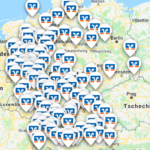 Volksbanken and Raiffeisenbanken – The network of cooperative Banks (Volksbanken) operates a network of donation-based Crowdfunding platforms. They are run under the label of „Viele schaffen mehr„. The software is provided by the German platform Startnext.
Volksbanken and Raiffeisenbanken – The network of cooperative Banks (Volksbanken) operates a network of donation-based Crowdfunding platforms. They are run under the label of „Viele schaffen mehr„. The software is provided by the German platform Startnext.
crowdfunding-berlin.com is a platform run by the Government of Berlin. It features projects from Berlin, Crowdfunding Experts and Events.
The Berlin Crowdfunding Prize was given for the best Crowdfunding campaign voted by the audience in three branches.
The City of Munich sponsors local campaigns by providing them with subsidies for creative services, such as hiring a video editor for the pitch videos.
Feuerwehr Wenzlow – Fire Brigade in Brandenburg which did a donation-based Crowdfunding campaign to finance equipment. Led to a discussion in local media about the financing of public fire safety.
Co-Berlin was a campaign for a Museum for Modern Photography in Berlin. When the Museum had to move to new premises, it used Crowdfunding to generate money for the renovation of the new building. The support also showed the media reach of the museum even during its closing.
The Kindermuseum Unikatum (Childrens Museum) reached private and commercial sponsors through the Crowdfunding campaign.
The Walhalla-Theater created a campaign for the lighting at an Off-Theatre in Wiesbaden. Unfortunately, the campaign was not successful despite good press work.
Goteo is a Spanish Crowdfunding Platform for Civic Purposes. Citizen initiatives, social, cultural, technological and educational projects can be funded. Goteo has developed its Crowdfunding software and published as open source software. There are more than 65.000 people active on the platform. The platform is run by a non-profit foundation.
SpaceHive is a British Crowdfunding Platform and probably the biggest Civic Crowdfunding platform in Europe. It has financed 4.9 million GBP in projects and partnered with more than 68 towns and local municipalities.
The Italian Platform Derev features a Civic Crowdfunding category which enables local projects as well political projects.
The city of Milano cooperated with the Italian-reward based platform Eppela and co-financed 400.000 Euros in civic Crowdfunding projects with up to 50.000 Euros each.
The Luchtsingel Bridge was built between 2013 and 2015 and connects two areas of Rotterdam by crossing a large street with heavy traffic. The bridge is 400 meters long and links a vegetable garden and a bar district. 17.000 wooden planks were sold to the citizens and companies in Rotterdam – in total 1300 funders. The project started a debate on the role of local government in building infrastructure.
The Ziekenhuis Vlissing was a lending-based Crowdfunding campaign to finance the continued existance of a hospital in the city of Vlissingen in in the Netherlands. The total amount of 10,600,000 € was financed on the platform Zibcrowd.nl, using an equity-based Crowdfunding approach by paying an interest of 5%.
wemakeit.com/projects/hilfe-fuer-whistleblower – Reward-based Campaign for a Whistleblower of a Swiss Building Cartel, one of the most successful campaigns on Wemakeit.
The Abel Tasman Beach in New Zealand was sold to the public in a campaign that received 2,280,461.92 NZ$ from 39,249 supporters. The aim of the donation-based Crowdfunding campaign was to keep the beach open to the public and prevent a sale to a private owner. The government also supported the campaign with 350.000 NZ$, as well as a large-scale donor who chose to remain anonymous.
The Pool+ is a combination of reward-based Crowdfunding campaigns on the platform Kickstarter. The aim is to develop a public pool which is situated in the Hudson River in New York. The pools water stems from the river itself, being filtered. The first campaign received 41,647 US$ from 1203 supporters, the second campaign in April 2013 received 273,114 US$ from 3175 supporters. Both amounts made it possible to finance early research into the construction of the pool as well as reaching out to possible partners.
Photo by AntoineJamin.com 

The workshop is part of an Erasmus+ Project “CSOs online”. CSOs are Civil Society Organisations, such as Non-Profit Organisations and Non-Governmental Organisations. “CSOs online” is a project for the development of nonprofit sector workers’ digital skills, especially in the field of online communication and fundraising, based on the exchange of experience, innovative practices and know-how in the frame of transnational partner meetings.
 Since 1994, Nonprofit Information and Training Centre (NIOK) Foundation has been working on strengthening civil society in Hungary by providing support and capacity building services to CSOs, facilitating dialogue on civil society issues, while enhancing the non-profit sector links to decision makers and donors.
Since 1994, Nonprofit Information and Training Centre (NIOK) Foundation has been working on strengthening civil society in Hungary by providing support and capacity building services to CSOs, facilitating dialogue on civil society issues, while enhancing the non-profit sector links to decision makers and donors.
 The Czech Fundraising Center is a leading non-profit in resource mobilization and civil society leadership development serving the CEE region and other countries in transition.
The Czech Fundraising Center is a leading non-profit in resource mobilization and civil society leadership development serving the CEE region and other countries in transition.
 Association for Community Relations (Asociatia pentru Relatii Comunitare, in Romanian, ARC) was established in 2001 and has at first served NGOs interested in fundraising from individuals and companies and for profit organizations interested in giving resources for social change.
Association for Community Relations (Asociatia pentru Relatii Comunitare, in Romanian, ARC) was established in 2001 and has at first served NGOs interested in fundraising from individuals and companies and for profit organizations interested in giving resources for social change.
 The Good Network Foundation (GNF) was founded in 2009 by the Academy for the Development of Philanthropy in Poland, one of the most experienced non-governmental organization in Poland.
The Good Network Foundation (GNF) was founded in 2009 by the Academy for the Development of Philanthropy in Poland, one of the most experienced non-governmental organization in Poland.
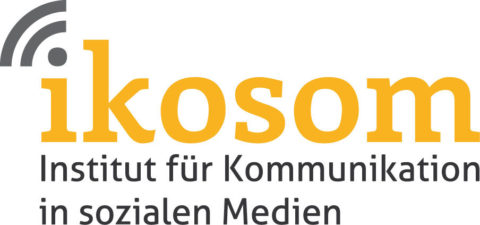 The Institute for Communication in Social Media (ikosom) investigates the use of social media in Germany and in Europe. It is a privately owned research institute which partners with public sector organisations, NGOs, foundations and universities.
The Institute for Communication in Social Media (ikosom) investigates the use of social media in Germany and in Europe. It is a privately owned research institute which partners with public sector organisations, NGOs, foundations and universities.
The workshop language is English.
The workshop will take place at Riesa Efau – a cultural center in Dresden. ikosom has chosen Dresden to as the place for this workshop because of its long tradition as a center of liberalism, multiculturalism and cross-border networks.
Riesa Efau is a cultural center in the heart of Dresden. It offers artists and creatives the possibility to display their works and it interacts with the community around the venue through workshops and events.
 The Fundraiser Magazin is the leading German Publication in the field of Fundraising, both offline and online. The Fundraiser-Magazin was created in 2006 by Matthias Daberstiel, Daniela Münster and Udo Lehner.
The Fundraiser Magazin is the leading German Publication in the field of Fundraising, both offline and online. The Fundraiser-Magazin was created in 2006 by Matthias Daberstiel, Daniela Münster and Udo Lehner.
 Kreatives Sachsen – the Center for Cultural and Creative Industries Saxony improves the conditions for successful creative work. It provides consulting and support to companies, freelancers, institutions, associations, networks and municipalities.
Kreatives Sachsen – the Center for Cultural and Creative Industries Saxony improves the conditions for successful creative work. It provides consulting and support to companies, freelancers, institutions, associations, networks and municipalities.
http://www.kreatives-sachsen.de
10:00: Welcome and Introduction
10.15: Update on Project Progress (Niok)
10:30: Donation-based Platforms in Germany
10:50: Donation-based Platforms in Poland
11:10: Donation-based Platforms in Czech Republic
11:30: Coffee Break
11:45: Donation-based Platforms in Hungary
12:15: Donation-based Platforms in Romania
12:45: Summary
13:00 Lunch Break
14:30: Crowdfunding Campaign Best Practices: Germany
15:00: Crowdfunding Campaign Best Practices: Poland
15:30: Coffee Break
15:45: Crowdfunding Campaign Best Practices: Hungary
16:15: Summary
10:00: Welcome
10:15: Crowdfunding Campaign Best Practices in the Czech Republic
10:45: Cross-Border Fundraising in Romania
11:15: Coffee Break
11:30: Summary of Best Practices
12:00: Discussion: How much of Fundraising is Cross-Border?
12:30: Lunch Break
13:30: CSOS Fundraising Guide Book – Working on the Structure and Content
14:30: Conclusion and Wrap-Up
15:00: Workshop ends
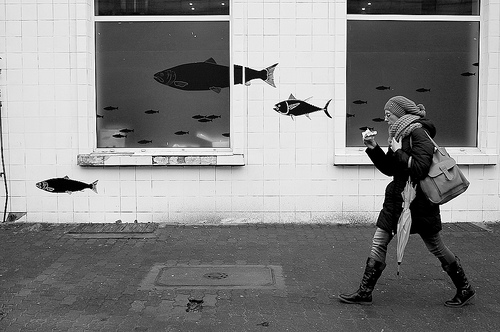
Im Rahmen der Masterarbeit „Die Relevanz von Civic Crowdfunding als kommunales Finanzierungs- sowie Beteiligungsinstrument in der deutschen Stadtentwicklung“ von Robin Zöllig von der Westfälischen Wilhelms-Universität Münster habe ich ein Interview gegeben, welches hier in gekürzter Fassung erscheint.
In welchem Maße deiner Meinung nach findet Civic Crowdfunding in Deutschland statt und welches Potenziale noch vorhanden ist?
Civic Crowdfunding ist die Finanzierung öffentlicher Güter, die meist lokal genutzt werden. Wenn das Ziel einer Crowdfunding-Kampagne etwas ist, bei dem es keine Zugangsbeschränkungen gibt oder wenn man ein öffentliches Gut herstellt durch die Crowdfunding-Kampagne, dann nennt man dies Civic Crowdfunding.
Das ist natürlich eine sehr weit gefasste Definition. Wenn man sich überlegt, dass fast alle Sachen, die im Crowdfunding ein öffentliches Gut herstellen, dann kann man sehr viel darunter subsumieren.
Wenn man sich im engeren Sinne die Projekte anschaut, wo ausschließlich ein öffentliches Gut hergestellt wird, dann gibt esrelativ wenige Crowdfunding-Kampagnen, die man dem Civic Crowdfunding zuordnen kann.
Ich glaube, wenn man die enge Definition nehmen würde, dann gehören zu Civic Crowdfunding zum Beispiel die Finanzierung öffentlicher Infrastruktur. Wenn man Dinge finanziert, wie ein Stadion, das sich im Besitz einer öffentlichen Körperschaft befindet und wo im Unterschied zu allen anderen Sorten des Crowdfunding man auch dann von der Bereitstellung des öffentlichen Gutes profitiert, wenn man nicht Teil der Crowdfunding-Kampagne war, dann würde ich dies als Civic Crowdfunding definieren.
Wenn man diese enge Definition nimmt ist es tatsächlich so, dass Crowdfunding noch nicht weit verbreitet ist. Es gibt einige Plattformen, die das machen: Place2help, leih-deiner-stadt-geld. Im Vergleich zu den Volumina ist es aber schon so, dass das gegenbasierte Crowdfunding oder das equity-based Crowdfunding oder lending-based Crowdfunding wesentlich größer sind als das Civic Crowdfunding – sowohl was das Volumen angeht als auch die Anzahl der Projekte.
Diese anderen Arten von Crowdfunding, lending-based usw. Die passen deiner Meinung nach eher weniger in diese Definition von Civic Crowdfunding rein?
Lending-based, equity-based, reward-based und donation-based Crowdfunding haben ja nichts mit dem Zweck zu tun, sondern es geht ja immer um die konkrete Gegenleistung, die damit verknüpft ist. Und Civic Crowdfunding wird definiert über den Zweck – öffentliche Güter.
Aber das gibt es in allen Bereichen des Crowdfundings. Es gibt lending-based Plattformen wie Leih-deiner-stadt-geld, es gibt equity-based Plattformen, die Civic Crowdfunding Projekte stattfden, z.B. die Stadionfinanzierung von Fussballclubs. Und dann gibt es natürlich im reward-based Crowdfunding einzelne Kampagnen und im donation-based einzelne Kampagnen. Civic Crowdfunding ist ein Thema, das sich über alle Crowdfunding-Arten erstreckt.
Ich habe für meine Arbeit den Fokus auf donation- und reward-based Crowdfunding gelegt, weil ich es auch als Beteiligungsinstrument in den Fokus rücken möchte. Und da hatte ich schon das Gefühl, dass es bei equity-based und lending-based weniger die Möglichkeit gibt für die Leute, sich zu beteiligen. Würdest du das auch so sehen?
Ich glaube nicht, dass das 100-prozentig zutrifft, weil die Beteiligungsform hängt vom Projekt ab und nicht von der Form des Crowdfunding. Man könnte z.B. auch ein equity-based Crowdfunding oder ein lending-based Crowdfunding so gestalten, dass es einen Beteiligungsaspekt gibt. Das steht vielleicht nicht im Vordergrund bei den aktuellen Projekten, aber das hat eher mit dem Projekt selber zu tun, ob man bereit ist, das zu machen.
Was kenn denn deiner Meinung nach die deutsche Stadtplanung lernen von anderen Ländern, wo Crowdfunding oder Civic Crowdfunding schon einen anderen Stellenwert einnimmt, wie z.B. in den USA oder Großbritannien oder auch in den Niederlanden?
Gerade in UK und in den Niederlanden sind Städte und Regionen und Gemeinden schon sehr stark mit Crowdfunding-Plattformen in Kooperation, z.B. betreiben die eigene Plattformen, haben Crowdfunding-Projekte kofinanziert. Im Unterschied zu Deutschland würde ich sagen zu Deutschland, dass dort die Bereitschaft von Städten und Gemeinden wesentlich größer ist, vor allem in den Niederlanden. Dadurch habendie Projekte auch eine größere Reichweite
Also fehlt es deiner Meinung nach da ein bisschen an der Bereitschaft von den Kommunen oder wer müsste da den ersten Schritt wagen?
In Deutschland ist die kommunale Finanzierung sehr konservativ. Meiner Meinung nach könnten Kämmerer mehr mit Crowdfunding mit kleinen Budgets experimentieren.
Aufgrund der Niedrigzinssituation an den Kapitalmärkten ist es für die meisten Kommunen relativ leicht, sich auf den Kapitalmärkten Geld besorgen zu können.
Glaubst du schon, dass Civic Crowdfunding in Zukunft dann auch eine andere Rolle einnehmen kann in der Stadtentwicklung?
Ich denke es wird darauf hinauslaufen, dass Crowdfunding als ein ganz normale Finanzierungsmöglichkeit für kommunale Projekte oder für regionale Projekte gesehen wird.
Crowdfunding dient nicht nur Finanzierungzielen, sondern dient den strategischen Kommunikationsziele einer Stadt oder Gemeinde. Man kann damit beispielsweise die Not-In-
My-Backyard-Mentalität lösen, da Bürger sich für die Projekte, die sie finanzieren auch stärker einsetzen und wissen wollen, was daraus geworden ist.
Ich würde gerne auf den zweiten Teil übergehen. Der bezieht sich hauptsächlich auf die Chancen und Risiken, die sich für die Städte und Kommunen über Civic Crowdfunding ergeben können, durchaus aber auch für die Initiatoren von Projekten oder Unterstützer – also welche Chancen und Risiken siehst du da?
Crowdfunding kann man kombinieren mit Community-Building. Das ist das wertvolle an Crowdfunding, das man zusätzliche Reichweite aufbaut. Als Risiko ist es vorhanden, dass der Aufwand eine Crowdfunding-Kampagne zu erstellen unterschätzt wird.
Manche Plattformen versuchen, die Projekte zu coachen und zu unterstützen, manche Plattformen versuchen, bei den Kofinanzierungen zu helfen – es gibt ja eine Reihe an Plattformen, die mit öffentlichen Partnern Kofinanzierungen aufgebaut haben.
Da gibt es ja verschiedene Möglichkeiten, solche Kofinanzierungswettbewerbe zu gestalten. Man sieht das sehr gut an dem Beispiel place2help München, bei dem die Spardabank München kooperiert mit der Plattform und hilft, die Projekte zu stärken.
Das wäre dann durchaus auch ein Weg, um größere Projekte auch über Civic Crowdfunding in Zukunft umsetzen zu können?
Beim reward-based und beim donation-based Crowdfunding sind generell die Projekte relativ klein. Das liegt daran, dass das Thema insgesamt noch klein ist, also auch das Thema Civic Crowdfunding.
Investitionen in Infrastruktur sind aber sehr wichtig, man könnte daher lernen von Projekten wie Luchtsingel in Rotterdam, bei dem die Stadt Rotterdam kofinanziert hat. Die Bürger waren bereit die Brücke mitzufinanzieren und haben mehrere Millionen Mio. Euro gespendet.
Im normalen Crowdfunding gibt es ja diese „Stretch Goals“ oder so eine Art Zusatzziele, die dann als Anreiz dienen, wenn das eigentliche Finanzierungsziel schon erreicht ist. Siehst du da bei Projekten in der Stadtentwicklung auch ein Potenzial für solche Anreizsysteme?
„Stretch Goals“ werden sehr bewusst eingesetzt als Teil der Kommunikationsvorbereitung eines Projektes. Teilweise werden die Finanzierungsziele etwas niedriger gelegt, damit man mit „Stretch Goals“ arbeiten kann. Es gibt eine Vielzahl von Kampagnen-Kommunikationselementen, die man für Civic Crowdfunding Kampagnen einsetzen kann: die Ausgestaltung der Gegenleistungen, Offline-Events, Community-Building, Stretch Goals.
Das ist ja auch gerade ein großer Positivaspekt vom Civic Crowdfunding, dass neue Netzwerke oder Akteure, die vorher noch nicht so viel mit Stadtentwicklung zu tun hatten, beteiligt werden, oder plötzlich einen Sinn darin sehen. Hast du noch andere Ideen, wie solche neu entstandenen Netzwerke auch längerfristig beteiligt werden können?
Wenn man sich die erfolgreichen Civic Crowdfunding Projekte anguckt, dann sieht man, dass bei denen, die es gut gemacht haben, dimmer eine Debatte darüber entsteht, was mit dem finanzierten Projekt jetzt passieren soll. Bei Luchtsingel ging es z.B. um die Frage, wie denn das Projekt umgesetzt wird in der konkreten Stadtplanung.
In den Niederlanden gab es ein Crowdfunding für ein Krankenhaus, das sollte geschlossen werden. Das Crowdfunding hat gezeigt, dass die Menschen das Krankenhaus relevant fanden.
In Deutschland gab es eine Crowdfunding-Kampagne für das Museum CO/Berlin. Beim Umzug des Museums in neue Räumlichkeiten wurde eine Crowdfunding-Kampagne gemacht, nämlich für eine Sicherheitstechnik. Die Crowdfunding-Kampagne wurde sehr stark unterstützt. Der Effekt war, dass die Politik in der Stadt gesehen hat: dieses Fotomuseum hat eine große Relevanz. Obwohl es geschlossen war, haben sie es geschafft, das Projekt erfolgreich zu finanzieren.
Also so ein Aufmerksamkeitsindikator?
Genau als Indikator dafür, ob eine öffentliche Einrichtung Reichweite erzeugt. Es gibt auch noch andere Beispiele, wo Museen usw. es geschafft haben über Crowdfunding ihren Politikern zu zeigen, dass immer noch genug öffentliches Interesse vorhanden ist. In den Niederlanden führte ein Crowdfunding für ein Religionsmuseum dazu, dass die Stadt anhand der Resonanz ihre Entscheidung zurücknahm das Museum zu schließen.
Jetzt ist ja dennoch einer der Kritikpunkte an Civic Crowdfunding, dass diese Abstimmung mit dem Geld stattfindet. Dass da nicht wirklich so ein demokratisch erzeugter, gesamtgesellschaftlicher Mehrwert da ist. Oder wie würdest du das sehen?
Natürlich braucht man parallel immer noch demokratische Prozesse, an denen jeder teilnehmen kann, unabhängig davon, ob er es sich leisten kann oder nicht, aber aus meiner Sicht spricht nichts dagegen, das mit Crowdfunding zu kombinieren, weil die Verwaltung ja auch immer noch die Möglichkeit hat, solche Projekte zu stoppen.
Die Stadtentwicklung lebt immer sehr stark vom privaten Engagement Einzelner. Gerade die großen Stadterweiterungen im 19. Jahrhundert kamen zum Teil auf das Betreiben einzelner Personen zustande, die ganze Stadtviertel erschlossen haben.
Auch die Gestaltung öffentlicher Infrastruktur und Marktplätzen wurde nicht immer durch die Gemeinschaft finanziert, sondern einzelne Mäzene drückten der Stadt ihren Stempel auf.
Mit Crowdfunding ist es aber demokratischer. Hier kann jeder mit einer kleinen Summe mitmachen. Man darf Crowdfunding nicht nutzen, um damit kommunale Beteiligungsprozesse zu ersetzen. Ich würde es immer nur als eine weitere Säule sehen, um das Engagement der Bürger zu mobilisieren.
Es gibt ja gerade in den städtischen Bereichen auch Quartiere, die vielleicht schon etwas vernachlässigt sind oder wo die Leute auch finanzieller eingeschränkt sind. Inwieweit können denn diese Quartiere oder diese Personen deiner Meinung nach von Civic Crowdfunding profitieren?
Es gibt auch Kampagnen, wo über Crowdfunding Zwischennutzungskonzepte finanziert worden sind, z.b. da wo Gewerberäume leer standen in Gebieten, die nicht besonders attraktiv waren. Durch das Zwischennutzungskonzept, das über die Crowd finanziert worden ist, ist dann auch gleichzeitig eine Kreativ-Szene dort entstanden.
Auf welche Art können denn die Kommunen die Entwicklung von Projekten über Civic Crowdfunding fördern oder durchaus auch in die formale Planung integrieren, aber ohne den alternativen oder innovativen Charakter dieser Bottom-Up-Planung zu sehr einzuschränken.
Ich glaube sie können einfach mit den Plattformen kooperieren und dort solche Wettbewerbe machen, solche Kofinanzierungs-Wettbewerbe, wo mit jedem Euro der Crowd ein Euro aus dem Stadthaushalt bereit gestellt wird.
Gehen wir zum dritten Teil über. Da geht’s eher um die Vorteile, die Crowdfunding gegenüber anderen Finanzierungs- oder Beteiligungsinstrumenten hat. Die erste Frage aus dem Bereich ist, dass ja beim normalen Crowdfunding dieses Alles-oder-Nichts-Prinzip sehr beliebt ist. Glaubst du, dass das auch für die Finanzierung städtischer Projekte geeignet ist?
Es gibt ja drei Arten, wie eine Crowdfunding-Kampagne gemacht wird. Einmal das „Alles-oder-nichts-Prinzip“, das nennt sich auch All or Nothing. Dann gibt es das flexible Crowdfunding oder auch Keep-It-All. Und dann gibt es ein Prinzip, das nennt sich Crowd-Sustaining. Crowd-Sustaining zeichnet sich dadurch aus, dass es keinen konkreten Endzeitpunkt der Kampagne gibt, sondern eine kontinuierliche Unterstützung.
Beim reward-based Crowdfunding ist das Alles-oder-Nichts-Prinzip sehr stark. Dieses Alles-oder-Nichts-Prinzip ist kein Bestandteil unbedingt des Crowdfundings, sondern nur eine Variante und die muss nicht unbedingt die Einzige bleiben. Die hat einen psychologischen Vorteil, weswegen es so oft eingesetzt wird, dass das Projektziel sehr stark und einfach kommuniziert wird, weil die Leute eben wissen: Okay, ich muss das jetzt finanzieren, ansonsten wird es das halt nicht geben.
Es gibt ja jetzt auch andere Beteiligungsinstrumente in der Stadtentwicklung. E-Partizipation oder Bürgerhaushaltmodelle. Siehst du da Verknüpfungspotenzial mit solchen Instrumenten?
Das Problem bei Bürgerhaushalten ist, dass die ein sehr starkes Vorwissen benötigen und auch die Konsequenzen der Beteiligung nicht so ganz klar sind. Das große Problem bei E-Partizipationsprojekten ist immer: Was ist das Ziel der E-Partizipation und wie erreicht man das, das Projekt dann umzusetzen entsprechend der E-Partizipations-Ergebnissen. Daran scheitern viele E-Partizipationsprojekte, weil die Leute denken: Warum soll ich daran teilnehmen.
Beim Crowdfunding ist das Gute, dass man unmittelbar sieht, was mit dem eigenen Geld passiert. Es gibt ja immer einen Projektträger und es gibt ein klares, definiertes Projektziel. Es ist im Interesse der Projektträger die Projektziele weiter zu kommunizieren und die Umsetzung transparent zu machen. Das ist der Vorteil von Crowdfunding als E-Partizipationstool.
Welche Rolle sollte die Kommune denn deiner Meinung nach übernehmen? Ich habe hier aus der Literatur von Davies gefunden… er hat vier mögliche Wege vorgeschlagen. Eins ist Promoter, Curator, Facilitator und Platform. Das Promoter meint im Grunde, dass die Kommune als Hauptfundraiser auftritt, also selbst Spenden sammelt für gewisse Projekte. Das zweite, Curator, das wäre, dass die Kommune hauptsächlich dazu da ist, um Aufmerksamkeit für bestimmte Projekte zu erzeugen und durchaus das z.B. mit Matchfunding verknüpft. Das dritte wäre Facilitator. Da geht’s eigentlich eher um so eine Art Informationsbereitstellung oder Training von Leuten, die an Crowdfunding interessiert sind. Und das letzte, Platform, wäre halt, dass die Kommune eine eigene Plattform komplett betreibt.
Ich glaube die ersten drei Möglichkeiten sind die relevanten Sachen. Eine eigene Plattform braucht eine Kommune eigentlich nicht zu machen. Man sieht das an den in Deutschland existierenden Plattformen, dass die Kommunen eigentlich nicht in der Lage sind, die Plattform sinnvoll weiter zu entwickeln. Ich finde das Portal Crowdfunding-Berlin.com ganz gut, weil die einfach dort die Projekte vorstellen und helfen zur Reichweite beizutragen.
Wichtig ist, dass eine Stadt oder ein städtischer Akteur versuchen sollte, relativ neutral zu agieren und versuchen eher mit verschiedenen Plattformen zusammen zu arbeiten und verschiedene Projekte, Beratung und solche Sachen zu finanzieren. Oder wie die Stadt Berlin es gemacht hat, einen Crowdfunding-Wettbewerb voran zu bringen.
Es entstehen Plattformen wie Sand am Meer und ich glaube das bringt nicht so viel, eine eigene Plattform zu gründen. Man sollte mit den existierenden Plattformen zusammenarbeiten.
Als letzte Frage noch. Nochmal zurück zum ikosom, wie ihr eure eigene Rolle seht in der weiteren Etablierung von Crowdfunding oder in dem Fall auch Civic Crowdfunding.
Wir machen Marktberichte, forschen, wir beraten auch viele Projekte. Wir sorgen eigentlich dafür, dass dieses Ökosystem sich weiter entwickelt.
Photo by mamnaimie piotr 

Crowdfunding is defined as an open-call for funding projects, often on internet-platforms, often through a group of people with a common purpose. The most commonly used Crowdfunding taxonomy distinguishes between four types of Crowdfunding:
Donation-Based
Reward-Based
Equity-Based
Lending-Based
Very roughly these types of Crowdfunding correspond to the type of exchange which a supporter (a member of the crowd) receives from the project. In donation-based Crowdfunding, this can be a tax statement indicating the amount and recipients, in reward-based Crowdfunding this can be a physical item or an immaterial perk. In equity-based Crowdfunding, this can be a share in a company or some other form of profit-participating agreement, in lending-based Crowdfunding, this can be a form of interest and/or repayment of invested money.
Crowdfunding platforms intermediate an exchange between a supporter and a project. The return received by the supporter is often personalized. The underlying idea is that a supporter receives some rare, exclusive opportunity to obtain a benefit, which in turn provides him with an incentive to support the project during the campaign, and not wait until the campaign is over and the product market-ready.
For instance, a supporter might receive a tech gadget which has not been produced yet, he pays an early-bird price, the platform puts the money into an escrow account, after the end of the campaign, the project receives the money and starts the production. The supporter carries the risk of losing the money if some production problems occur, but at the same time he is part of a special community of first movers.
For practical and theoretical purposes, it is essential to understand the motives of supporters in a Crowdfunding campaign. Rational-choice theorist might point to the value of being a first mover, of obtaining a product or service before anybody else, of being part of early-stage investors with higher chances for profits. All of these benefits might be greater than the potential risk of losing money (or the real loss of interest if the money would have been used for other purposes, for instances in risk-free).
There is, however, a conundrum: how would rational choice theory explain if someone supports a campaign where he or she does not receive any tangible benefits exclusively for him- or herself? In donation-based Crowdfunding, altruistic motives are often assumed on the side of the supporter. The supporter gives money in order to facilitate a project of civic value: he or she donates to a non-profit organisation which generates some form of common good.
The supporter is thus part of a community of enablers, which goes beyond the advantages of first movers. The supporters derive some value from joining campaigns of which they don’t receive special exclusive benefits, but the benefit is generated for society as a whole.
One might argue that the supporters fund projects where they feel that their money bridges a finance gap, where private sponsorship enables causes which are not adequately funded. Interestingly, also causes are funded on platforms where adequate funding should be available – through tax money. In the Netherlands, the bridge Luchtensingel was funded through an external website, thus prompting the question why the city government did not pay for the bridge through its own budget.
This question is not just a theoretical one, because it is at the core of the definition of Civic Crowdfunding. Civic Crowdfunding can be found on mostly donation-based platforms, some reward-based platforms, few equity-based platforms and very few lending-based platforms, but the topic is likely to increase in scope and relevance over the next couple of years.
I define “Civic Crowdfunding” as the subset of Crowdfunding campaigns which aim to finance a civic cause. A civic cause is a cause which improves public infrastructure – this can be means of public transport, public institutions, public events. The dominant feature of a public infrastructure is that it is impossible to exclude anyone from using it. In this case Civic Crowdfunding is generating benefits where it is impossible to exclude a non-supporter from benefitting from the cause.
The bridge Luchtensingel is a prime example: the supporters of the project cannot exclude non-supporters in using the bridge for free. They have no right and no means to make non-supporters pay for the use of the bridge through tolls or taxes – and they have no incentive to do so. They have funded a bridge which could have been financed by tax money as well, thus indirectly making everybody pay for it, but they have chosen not to. The infrastructure generates public benefits and the supporters have chosen to generate the public benefits by becoming part of a community of enablers.
Photo by Jonathan Gross 
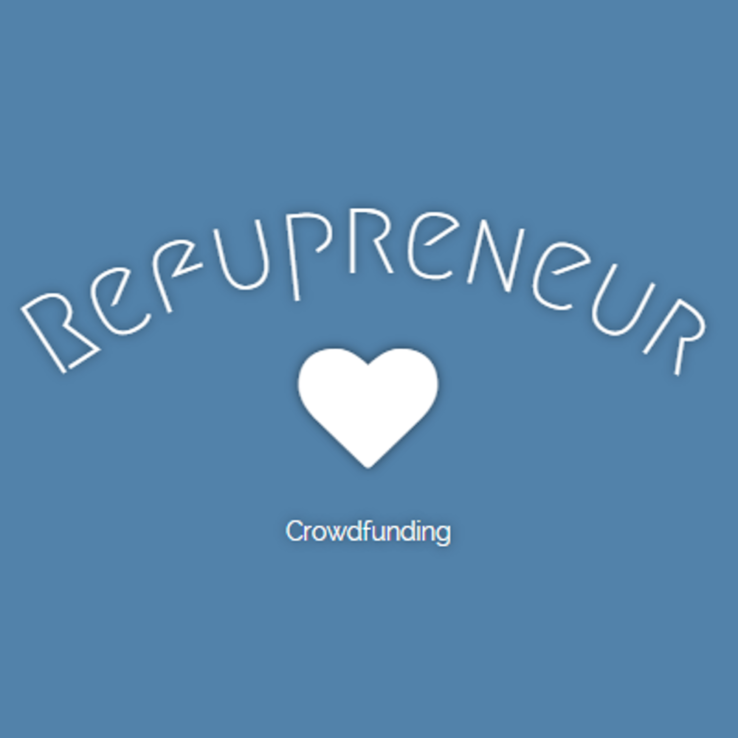
 At the CEO Fall Meeting in Berlin, I held a presentation on the topic „How Crowdfunding can solve the refugee crisis“. Below you can find a list of Crowdfunding projects which I presented at the conference. I organized them according to the type of need that the project tries to solve.
At the CEO Fall Meeting in Berlin, I held a presentation on the topic „How Crowdfunding can solve the refugee crisis“. Below you can find a list of Crowdfunding projects which I presented at the conference. I organized them according to the type of need that the project tries to solve.

 Im April 2015 erschien unser Fachartikel „Civic Crowdfunding“ in der Verbandszeitschrift von der Arbeitsgemeinschaft für Wirtschaft und Verwaltung eV erschienen, die IT-Unternehmen und Verwaltung vernetzt. Der Artikel wurde auch im German Crowdfunding Network veröffentlicht.Photo by manoftaste.de
Im April 2015 erschien unser Fachartikel „Civic Crowdfunding“ in der Verbandszeitschrift von der Arbeitsgemeinschaft für Wirtschaft und Verwaltung eV erschienen, die IT-Unternehmen und Verwaltung vernetzt. Der Artikel wurde auch im German Crowdfunding Network veröffentlicht.Photo by manoftaste.de 